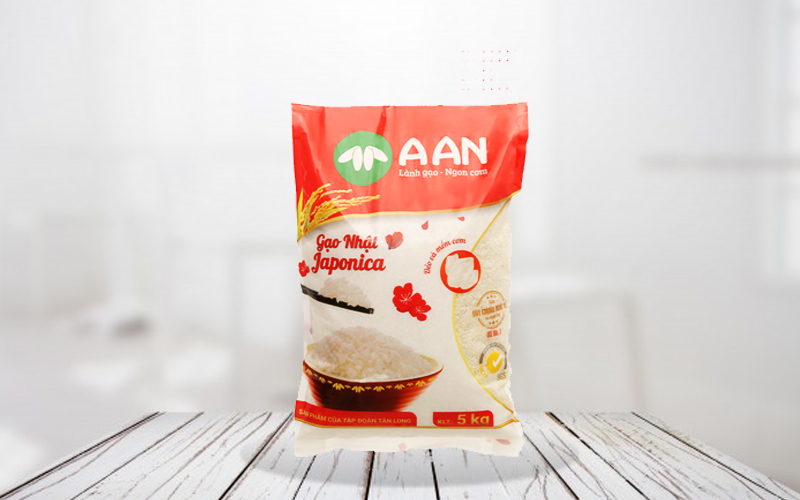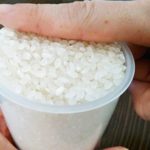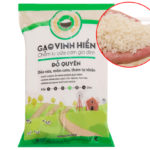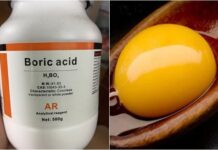Vietnamese rice-based agriculture has been a staple in the country’s culture for centuries, and rice remains a primary food source. Today, Vietnamese consumers are gravitating towards Japanese rice for its superior taste and versatility in preparing dishes like sushi and rice rolls.
1 What is Japanese Rice?
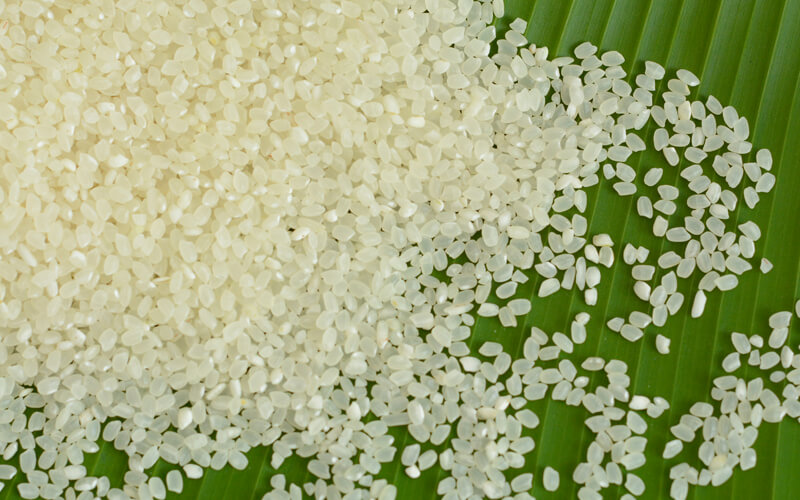 Japanese rice grains are short, round, and plump
Japanese rice grains are short, round, and plump
Japanese rice differs from its Vietnamese counterpart in terms of shape and flavor. Typically, Japanese rice comes in three sizes: long, medium, and short grains. Japanese rice grains are short, round, and plump, and they cook up very fragrant and sticky. Even when the rice is cold, it retains its glossy, sticky, and round consistency.
The round grains are less likely to break, and the rice is packed with nutrients and minerals beneficial to both adults and children’s health. Moreover, Japanese rice is particularly well-suited for making sushi, resulting in a tastier dish than when prepared with other types of rice. For those who enjoy sticky rice, Japanese rice is a must-try due to its exceptional stickiness.
2 Types of Japanese Rice We Carry
Vinh Hiển Taiyo Japanese-Style Rice
Vinh Hiển Taiyo Japanese-style rice is characterized by its round and uniform grains. When cooked, the rice is sticky, sweet, and mildly fragrant. This variety belongs to the Japonica family of Japanese rice and is currently cultivated in the Mekong Delta region of Vietnam.
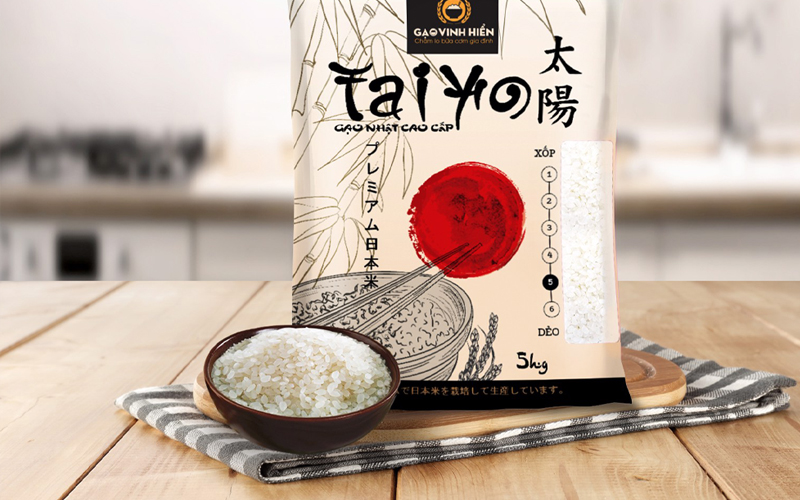 Vinh Hiển Taiyo Japanese-Style Rice
Vinh Hiển Taiyo Japanese-Style Rice
Vinh Hiển Taiyo rice is rich in antioxidants and natural minerals like , which boost energy levels and strengthen the immune system. It is particularly suitable for individuals with asthma, low blood pressure, and cardiovascular issues. Before cooking, soak the rice for 30 minutes. The ideal water-to-rice ratio is 1 cup of rice to 1.2 – 1.3 cups of water. For optimal preservation, store the rice in a cool, dry place away from direct sunlight.
An Gia Japanese-Style Rice
An Gia Japanese-style rice is identifiable by its short, round grains. When cooked, it offers a natural sweetness, a soft texture, and an appealing fragrance. This variety is a Japonica type of Japanese rice grown organically, without chemicals, bleaching agents, artificial flavors, or heavy metals. It meets the HACCP food safety standards.
 An Gia Japanese-Style Rice
An Gia Japanese-Style Rice
An Gia rice is ideal for preparing sushi, Japanese dishes, or everyday meals. For optimal cooking results, use a 1:1 water-to-rice ratio. This will ensure the rice is cooked to perfection, with the right amount of stickiness and fragrance.
Ecoba Anh Đào Organic Japanese Rice
Ecoba Anh Đào organic Japanese rice is soft, fragrant, sweet, and sticky when cooked, and it has a uniform expansion characteristic. This rice is a purebred variety grown using a unique traditional method in fertile, clean soil that meets stringent standards. Currently, it is cultivated in Ca Mau province, Vietnam, as the region provides the ideal conditions for this rice variety.
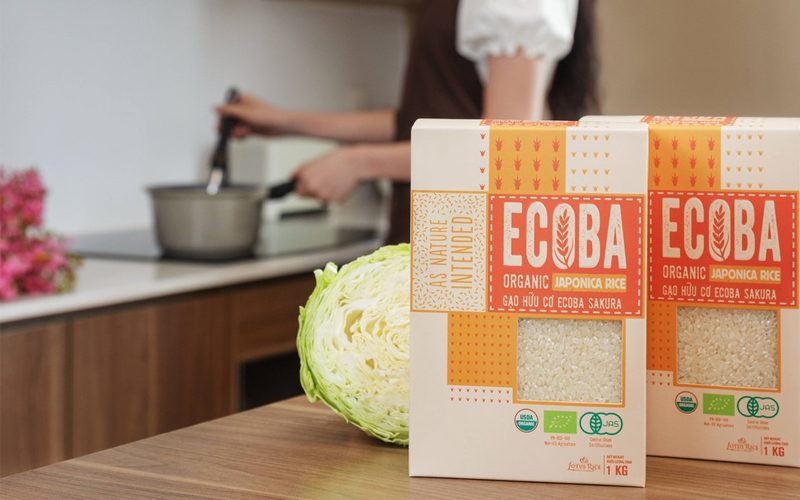 Ecoba Anh Đào Organic Japanese Rice
Ecoba Anh Đào Organic Japanese Rice
Rich in minerals and nutrients, Ecoba Anh Đào organic Japanese rice boosts children’s immunity and overall health. This rice has been certified organic and meets food safety standards, ensuring the highest quality for consumers. For optimal cooking, use a 1:2.5 water-to-rice ratio and cook for 15-20 minutes.
Japonica A An Japanese Rice
Japonica A An Japanese rice is known for its stickiness, soft texture, and minimal expansion during cooking. It has an exquisite fragrance and taste, and its stickiness is unmatched. This variety also belongs to the Japonica family and is grown scientifically without growth stimulants.
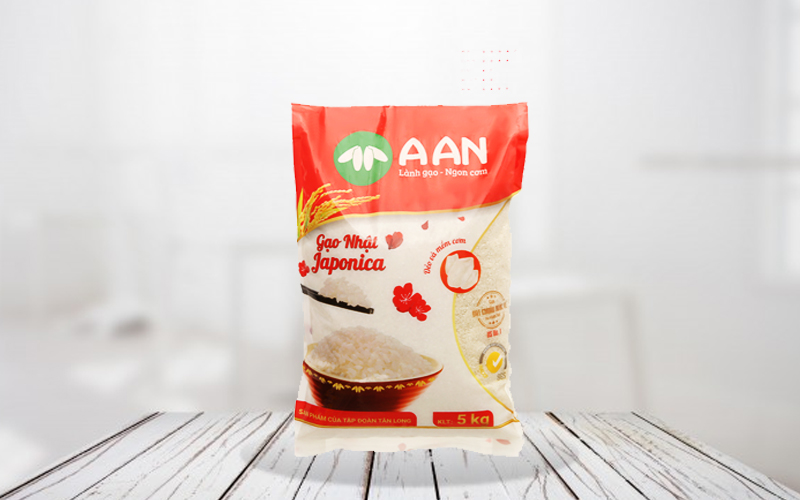 Japonica A An Japanese Rice
Japonica A An Japanese Rice
Japonica A An rice boasts international quality certifications, and for optimal cooking, use a 1:1 to 1:1.2 water-to-rice ratio. Store the rice in a cool, dry place, away from direct sunlight, to maintain its quality.
Japanese rice has gained popularity among Vietnamese consumers due to its delicious taste, stickiness, and aroma. We now offer a range of Japanese rice products, providing homemakers with options to create delicious and nutritious meals for their families.
The Ultimate Guide to Perfect Rice: 7 Tips to Make Your Rice Taste Expensive
“Unraveling the Secrets of Japan’s Delicious Rice: A Guide to Emulating the Japanese Way of Cooking Rice for a Taste of the Far East in Your Own Home”.
Have you ever wondered why rice tastes so exquisite in Japan? Even in the humblest of eateries, the Japanese take immense pride in their rice, carefully selecting and preparing it to perfection. Now, you can unlock the secrets to achieving that same delectable taste with your own Vietnamese rice. Imagine impressing your family and friends with restaurant-quality rice, cooked with a touch of Japanese magic. Get ready to elevate your culinary game and bring a little piece of Japan to your dinner table!

























